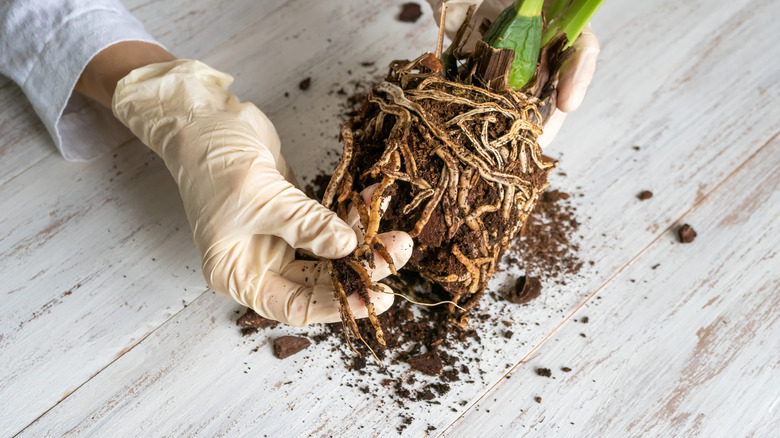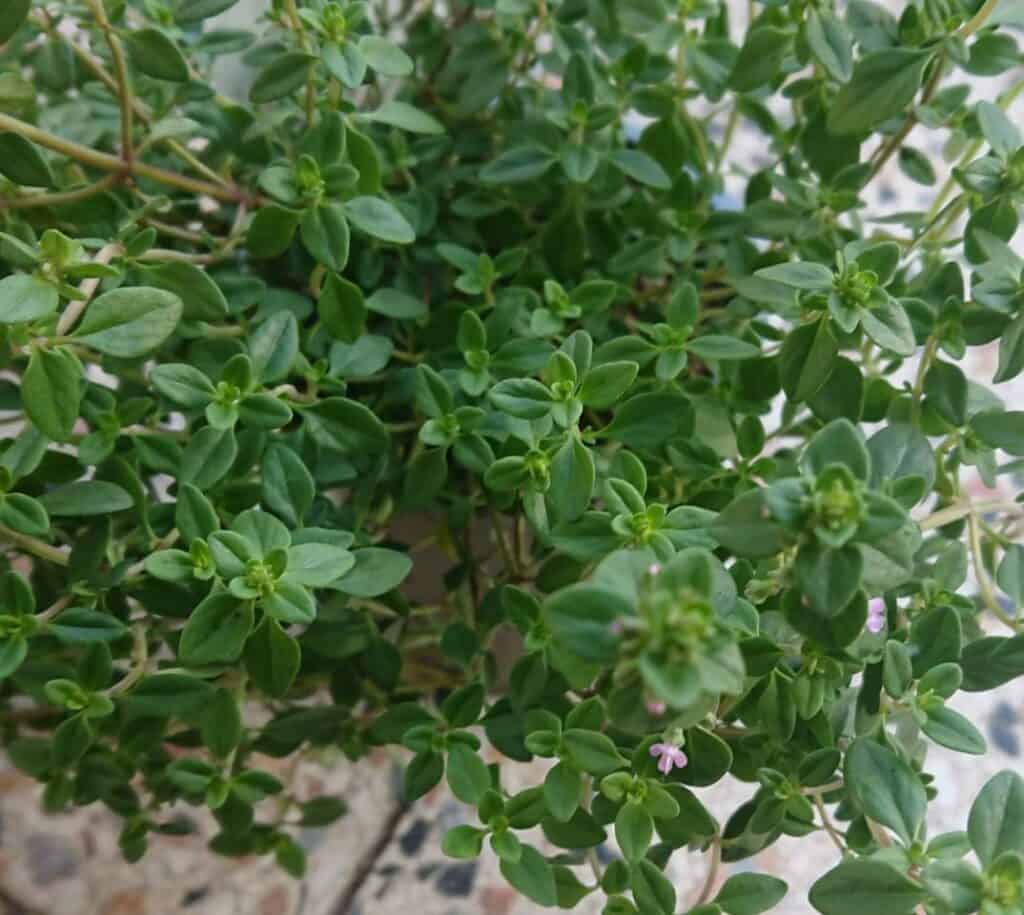Thyme is a hardy herb that can thrive for years in the garden with proper care. However thyme can sometimes struggle and appear to be dying. Don’t give up hope! There are several methods you can try to bring your thyme plant back to life.
Common Reasons Thyme Dies
Before attempting to revive thyme, it’s important to understand why it is declining in the first place. Here are some of the most common causes of thyme death:
-
Overwatering – Thyme prefers dry soil and is prone to root rot in wet conditions. Leaves may turn yellow and wilt.
-
Lack of sunlight – Thyme needs at least 6 hours of direct sun daily Too much shade leads to poor growth,
-
Compacted soil – Thyme needs well-draining soil. Dense clay or compost causes root rot.
-
Old age – Thyme lives 3-5 years on average. After a few years, leaves may turn brown and growth stalls.
-
Harsh winters – If thyme experiences severe frost or freeze damage, stems can die back.
-
Pest infestations – Insects, mites, or fungi can attack thyme and kill stems and leaves.
How to Revive Thyme with Root Rot
If you suspect your thyme is dying from overwatering, the soil staying too moist, or poor drainage, it likely has developed root rot. To help the plant recover:
-
Remove it from wet soil immediately and inspect roots. Cut off any brown, mushy roots.
-
Repot in a container with drainage holes using a gritty, sandy soil mix.
-
Water sparingly, only when the top 1-2 inches of soil are dry. Thyme is drought tolerant.
-
Place pot in full sun to encourage new growth.
-
Apply an organic fungicide to kill remaining root rot fungus.
-
Be patient for new growth. It may take several weeks to improve.
Reviving Limp, Wilting Thyme
If your thyme plant appears limp, drooping and wilting, this is often caused by over-fertilization or excessive nitrogen. Too much nitrogen leads to weak, floppy growth in thyme. Stop fertilizing immediately and:
-
Move thyme to fresh soil or potting mix without fertilizer.
-
Mix in sand or perlite to improve drainage.
-
Prune back any leggy growth to just above woody stems.
-
Water minimally and place in full sun.
-
Growth should firm up as nitrogen levels drop to proper range.
Bringing Thyme Back from Frost Damage
Thyme is considered cold hardy but extreme winters or late spring frosts can damage and kill stems. If frost damage occurs:
-
Wait until danger of frost has passed then remove any dead, brown leaves or stems.
-
To encourage new growth, prune back damaged parts to right above thick, woody sections of stems.
-
New shoots and leaves should resprout within several weeks.
-
Protect thyme next winter by covering with mulch or bringing indoors.
Reviving Overgrown Thyme Plants
If your thyme plant is several years old, it may become woody and overgrown with few leaves being produced. To rejuvenate old plants:
-
In early spring, prune thyme dramatically by cutting back all stems to just above the plant’s woody base.
-
This stimulates the growth of fresh, new foliage.
-
Fertilize lightly with organic fertilizer to encourage regrowth.
-
Water more frequently as the plant rebounds with tender new growth.
Bringing Thyme Back Indoors After Winter
To overwinter thyme plants indoors, reduce watering to only once every 4-6 weeks and place in a sunny window. In spring, revive thyme by:
-
Transitioning plant slowly back outside over 7-10 days to prevent transplant shock.
-
Inspecting for any dead stems or leaves and pruning those away.
-
Resuming normal watering and fertilizing routines as plant regrows. Repot in fresh soil if needed.
-
Thyme should perk back up within a few weeks of being back outdoors for the season.
How to Revive Thyme from Cuttings
The easiest way to revive thyme is to take 3-4 inch cuttings from healthy stems and root them in water or potting mix to grow entirely new plants. To do this:
-
Take cuttings in early summer from the tips of vigorous stems.
-
Remove lower leaves, leaving just top few sets of leaves.
-
Place cut end in glass of water or directly into starter potting mix.
-
Keep soil or water fresh. New roots and growth will emerge in 2-4 weeks.
-
Transplant into garden or containers after a dense root system develops.
When It’s Too Late to Rescue Thyme
If your thyme plant’s stems are all brittle, brown and collapsed, the roots have rotted away, or the base is dead and dried up, unfortunately thyme cannot be revived. Time to replace dead thyme plants by:
-
Pulling up and discarding entirely dead plants and soil. Sterilize tools after.
-
Sowing new thyme seeds or taking cuttings from a healthy plant.
-
If frost damaged, wait until danger of frost has passed before replanting.
-
Select a new location with full sun and well-draining soil.
While thyme is hardy, it may need occasional help recovering. With the right troubleshooting and care, your thyme can bounce back more vibrant than ever.
What does root rot do to thyme?

Root rot is a fungal disease that attacks roots and renders them unable to absorb nutrients. It is typically caused by overwatering. Because fungus thrives in wet conditions, moist soil is an ideal breeding for the disease. Thyme needs well-draining soil, or it will be susceptible to root rot. If you leave thyme roots to rot, the plant will die, but the fungus will stay in the ground. The fungus can linger in the soil and infect neighboring or newly planted plants. Advertisement.
Browning occurs because the roots can no longer absorb the necessary nutrients and water to survive. If thyme is green, it means it is healthy and full of nutrients. If it is brown, it means it is stressed out and lacking nutrients. Infected roots will appear dark brown or black and feel mushy. There is also a distinct and foul smell of decaying plant matter. The roots of a plant like thyme are less likely to grow back if they are darker and mushier. However, brown, slightly firm roots and roots that have just begun to rot are excellent candidates for rescuing.
How to Rejuvenate Thyme : Garden Space
FAQ
How do I get my thyme to grow back?
Why is the thyme plant dying?
How to tell if thyme has gone bad?
How do you revive a dying thyme plant?
To revive a dying thyme plant, you need to begin by addressing the most common causes of thyme death. Thyme prefers dry soil, so if the herb is planted in wet ground, you may be able to revive it by simply watering less frequently. Thyme loves full sun.
Can a dying thyme plant be revived?
If the thyme plant’s roots are still strong, it could still be possible to revive it. Start by removing the ailing plant from the ground. The herb has a possibility of coming back to life if you spot white roots. A dying thyme plant can be saved by: Put new potting soil in the plant’s container.
Can thyme survive cold weather?
Mature thyme plants can survive temperatures as low as 3°F (-16°C) if kept dry. With that being said, survival can look different from plant to plant. When they’re exposed to consistently cold winds, you may notice your thyme plants turning brown and dry from the top of their stems. This dying off will move down to the bottom of the plant.
How do you get thyme back?
Move the thyme plant to some fresh well-draining soil and let it dry, or dry its roots out beforehand with a fan. Over time, the plant should slowly bounce back. Keep in mind, this is a last-ditch effort. This root disturbance can be the final straw, so use this technique carefully.
Can Thyme grow back?
Trim down the thyme’s lanky or wilting growth for a more rounded look (do not cut into woody growth, as this will not grow back particularly well). Place the thyme plant in full sun and only water it when the soil has dried out slightly between waterings, at which point the thyme should start to grow again.
How long does thyme last?
(How to Revive it) Thyme plants are low-maintenance perennial herbs that are native to the Mediterranean region of Europe and they are adapted to the growing conditions of the Mediterranean. Thyme is a relatively short-lived herb and can produce leaves for culinary use for around 5 to 6 years if the plant is cared for properly.
- The Ultimate Guide to Growing Strawberries in Raised Beds - August 8, 2025
- No-Dig Garden Beds: The Easiest Way to Grow a Beautiful Garden - August 6, 2025
- How to Protect and Preserve Wood for Raised Garden Beds - August 6, 2025

